Samsung’s 2022 flagship phone Galaxy S22 Ultra (Exynos) features impressive specs all around, including an Exynos 2200 chipset, a large 6.8-inch display and a main camera with dual-tele lenses.
The front camera fits right in and with a 40MP sensor, autofocus and 4K video recording at 60 frames per second offers more enticing technical specs than many competitors.
Read on to find out how the Samsung’s 2022 Galaxy S22 Ultra (Exynos) performed in the DXOMARK Selfie test.
Key front camera specifications:
- 40MP 1/2.82″ sensor
- f/2.2 aperture
- 26mm equivalent focal length
- PDAF
- 4K at 30/60 fps, 1080p at 30fps
About DXOMARK Camera tests: For scoring and analysis in our smartphone camera reviews, DXOMARK engineers capture and evaluate over 3000 test images and more than 2.5 hours of video both in controlled lab environments and in natural indoor and outdoor scenes, using the camera’s default settings. This article is designed to highlight the most important results of our testing. For more information about the DXOMARK Camera test protocol, click here. More details on how we score smartphone cameras are available here.
Test summary
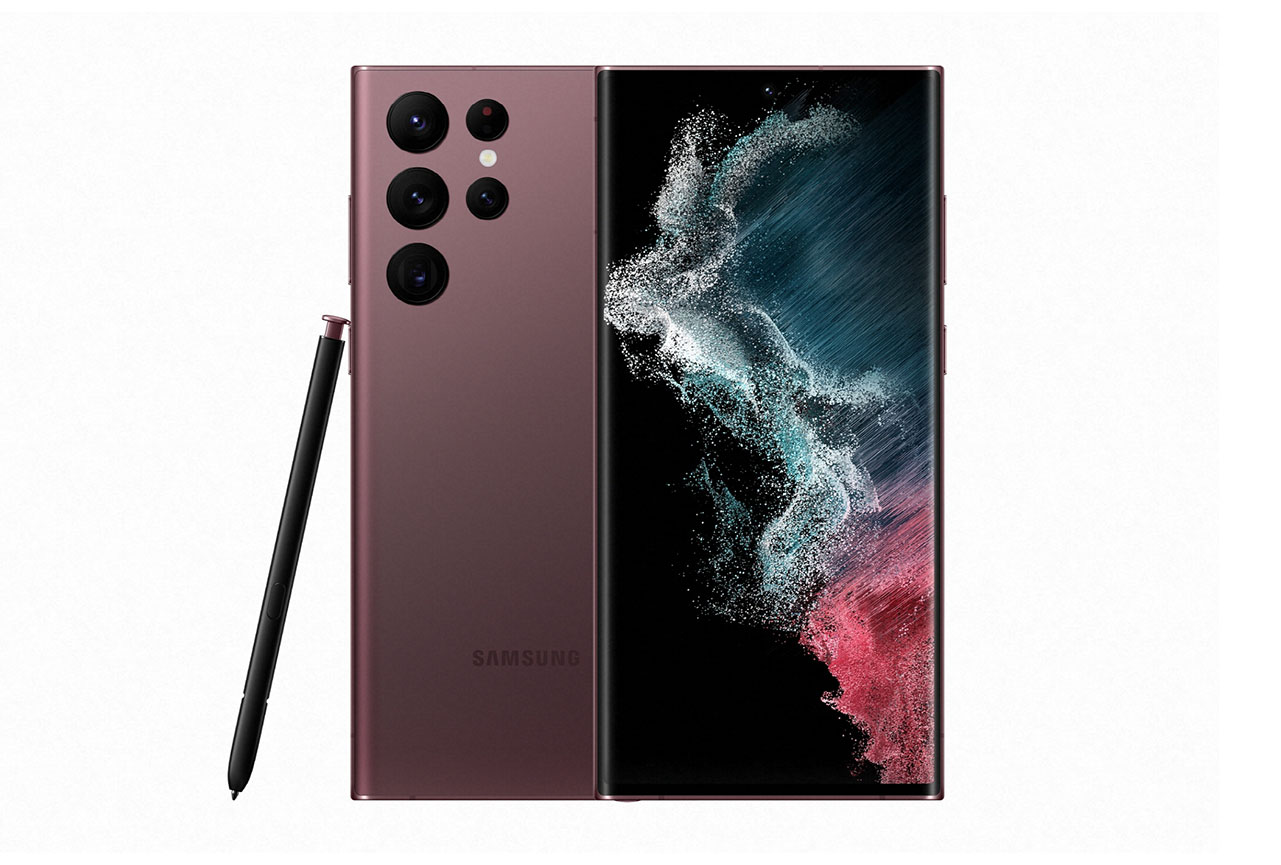
Samsung Galaxy S22 Ultra (Exynos)


 6th
6th 5th
5thPros
- Good exposure and wide dynamic range in photo and video
- Accurate white balance and nice color
- Fast and repeatable autofocus
- Nice bokeh effect with accurate depth estimation
- Nice color and skin tones in video
- High levels of detail in video
Cons
- High levels of image noise
- Slightly limited depth of field
- Ghosting, halo and ringing artifacts
- Occasional autofocus instabilities in video
- Camera shake while walking when recording video
With a DXOMARK Selfie overall score of 101 the Samsung Galaxy S22 Ultra (Exynos) is among the best phones we have tested for selfie shooting and improves one point over its predecessor S21 Ultra 5G (Exynos). Improvements are most noticeable in terms of depth of field and texture as well as video. On the downside, noise levels are higher than on the previous model and video stabilization is less effective.
When shooting still images, the camera handles exposure well, capturing good target exposure on portraits and a wide dynamic range in high-contrast scenes. Colors are nice, with neutral white balance and natural skin tones. However, noise levels are high in all conditions, especially in brighter outdoor light where we can see luminance noise on backgrounds and in shadow areas. The autofocus is quite fast and repeatable, but depth of field is a little limited, which can result in blurry background subjects in group selfies. Our testers also observed some image artifacts, including ghosting, halos, and ringing.
In video mode, exposure and color are managed just as well as for stills, but we did see some autofocus instabilities and depth of field is just as limited as in photo mode. Textures are rendered nicely, with a high level of detail, but the camera’s main drawback in video mode is the ineffective video stabilization when walking while recording. In this type of situation, a lot of camera shake will be noticeable in the video footage.
Photo
The Samsung Galaxy S22 Ultra (Exynos) achieves a Selfie Photo score of 104. In this section, we take a closer look at each sub-attribute and compare image quality against competitors.

Exposure and Contrast
Samsung Galaxy S22 Ultra (Exynos)
88
91
In these tests, we analyze target exposure, contrast, and dynamic range, including repeatability across a series of images. Tests are undertaken in a wide range of light conditions, including backlit scenes and low light down to 1 lux. The score is derived from a number of objective measurements in the lab and perceptual analysis of real-life images.
In this difficult backlit scene, the S22 Ultra manages good exposure and a nice contrast on both faces. The camera also does a good job at retaining detail in the brighter background, although some clipping is noticeable. There is slightly better detail in the background of the S21 Ultra image but face exposure is brighter on the S22 Ultra. Compared to the iPhone the S22 Ultra shows better highlight retention and contrast.
In this close-up, the two Samsung devices deliver very similar exposure. Compared to the iPhone there clipping in the background is less strong and contrast is better. Face exposure is a touch darker, though.
In this graph, you can see that the S22 Ultra delivers good exposure in all conditions. Overall exposure is better than on the comparison devices.
This graph shows lightness measured on the 18% gray patch of the Colorchecker® chart against the light level (in lux). The white area represents the region where the lightness is considered correct.

Color
Samsung Galaxy S22 Ultra (Exynos)
92
105
In these tests, we analyze color rendering, skin tones, white balance, and color shading, including repeatability across a series of images. The score is derived from a number of objective measurements in the lab and perceptual analysis of real-life images.
In this scene, both Samsungs produce quite neutral white balance and nice skin tones. The red wall in the background is more saturated on the iPhone but skin tones are too red as well.
Under indoor lighting, the white balance is more neutral on the iPhone but skin tones still are too red. Both Samsung phones produce again very similar color, with a cooler color cast and more neutral skin tones.

Focus
Samsung Galaxy S22 Ultra (Exynos)
95
97
In these tests, we analyze autofocus accuracy and shooting time, including repeatability, in the lab. We test focus failures, depth of field, and tracking of moving subjects using perceptual analysis of real-life images.
All three comparison devices come with autofocus systems in the front camera, allowing them to focus correctly across varying subject distances. In the focus range graph below, we can see that all three devices deliver in-focus images across all tested subject distances (any acutance higher than 80% is considered in focus).
The S22 Ultra’s depth of field is wider than the S21 Ultra’s but still somewhat limited. Background subjects in group shots tend to be slightly out of focus. In comparison, the background is slightly sharper on the iPhone 13 Pro Max.

Texture
Samsung Galaxy S22 Ultra (Exynos)
74
85
In these tests we analyze texture on faces and objects, including objects in motion, in a range of light conditions, using several lab test setups and perceptual analysis of real-life images.
Our lab measurements show that texture acutance on the S22 Ultra is higher than on the comparison devices for most conditions, except very bright and very low light.
Under indoor lighting, the S22 Ultra produces better detail than the iPhone. Textures also look more natural than on the S21 Ultra.

Noise
Samsung Galaxy S22 Ultra (Exynos)
52
90
In these tests, we analyze noise on faces and objects, including objects in motion, in a range of light conditions, using several lab test setups and perceptual analysis of real-life images.
When shooting outdoors, noise levels on the S22 Ultra are higher than on the comparison phones. Noise is most intrusive in the shadows and background.
For these tests we switch to the camera’s bokeh or portrait mode and analyze depth estimation, bokeh shape, blur gradient, and repeatability, as well as all other general image quality attributes mentioned above. The score is derived from perceptual analysis of real-life images.
This difficult scene is handled quite well by the S22 Ultra’s bokeh mode. Correctly, no blur has been applied to the plant as it is in the same plane as the subject. Additionally, the simulated aperture makes for a nice overall effect. Some slight depth artifacts are visible. This is the same for the other devices which also apply some slight blur to the plant.

Artifacts
Samsung Galaxy S22 Ultra (Exynos)
82
92
In these tests we check images for optical artifacts such as vignetting, flare, lens softness in the corners, distortion, and chromatic aberrations, as well as for processing artifacts such as ghosting and fusion errors, hue shift, and ringing.
Ghosting artifacts can be noticeable when capturing high-contrast or low light scenes. Our testers also observed some ringing.
Video
In our Video tests, we analyze the same image quality attributes as for still images, such as exposure, color, texture or noise, but we also include such temporal aspects as speed, and smoothness and stability of exposure, white balance, and autofocus transitions.
NOTE: The sample video clips in this section are best viewed at 4K resolution.
The Samsung Galaxy S22 Ultra (Exynos) achieves a Selfie Video score of 95. A device’s overall Video score is derived from its performance and results across a range of attributes in the same way as the Photo score. In this section, we take a closer look at these sub-scores and compare video image quality against competitors.

Exposure and Contrast
Samsung Galaxy S22 Ultra (Exynos)
81
86
In this video scene, the S22 Ultra produces accurate exposure with a good compromise between different skin tones and good detail retention in the bright background. The iPhone’s dynamic range is wider but the exposure is quite dark.
Target exposure is slightly better than the comparison devices in low light and quite similar to the S21 Ultra in bright conditions (slightly over target but still acceptable).

Color
Samsung Galaxy S22 Ultra (Exynos)
84
87
Video white balance on the S22 Ultra is colder than on the iPhone, but skin tones look more natural than on the predecessor S21 Ultra.

Focus
Samsung Galaxy S22 Ultra (Exynos)
83
92
In video mode the autofocus system works fast and accurately but instabilities are sometimes noticeable. Depth of field is quite wide, and wider than on the comparison phones, as you can see in this clip.

Texture
Samsung Galaxy S22 Ultra (Exynos)
88
97
Measured video texture on the S22 Ultra is similar to S21 Ultra but noticeably higher than on the iPhone 13 Pro Max.
Level of texture is higher for the S22 than the S21 and similar to the iphone.

Noise
Samsung Galaxy S22 Ultra (Exynos)
64
83
Video noise is well under control under indoor conditions and under low light. Noise levels are lower than on the competitors.
The results we can see in the clips above are confirmed by our lab measurements. Noise levels on the S22 Ultra in the lab are lower than on the iPhone 13 Pro Max.
This graph shows temporal visual noise and temporal noise chromaticity ratio against the light level (in lux). Temporal visual noise and noise chromaticity ratio are measured on the visual noise chart in the video noise setup.

Artifacts
Samsung Galaxy S22 Ultra (Exynos)
88
92
For video artifacts, we check for the same kinds of artifacts mentioned in the Photo section, along with such video-specific artifacts as frame rate variation in different light conditions, judder effect, and moving artifacts (artifacts such as aliasing, color quantization, and flare can often be more intrusive when moving than in a still image).
Anamorphosis (perspective distortion) can sometimes be noticeable on faces close to the edge of the frame. In this clip, this is especially noticeable on the face on the right.

Stabilization
Samsung Galaxy S22 Ultra (Exynos)
74
82
In these tests, we analyze residual motion when handholding the camera during recording, as well as when walking and running with the camera. We also look for stabilization artifacts such as jello effect, sharpness differences between frames, and frameshift (abrupt changes of framing).
While stabilization works well when holding the camera still, it is not very effective when moving during recording. A lot of residual camera motion is still noticeable in the footage. The S22 Ultra is worse than both comparison devices in this respect.


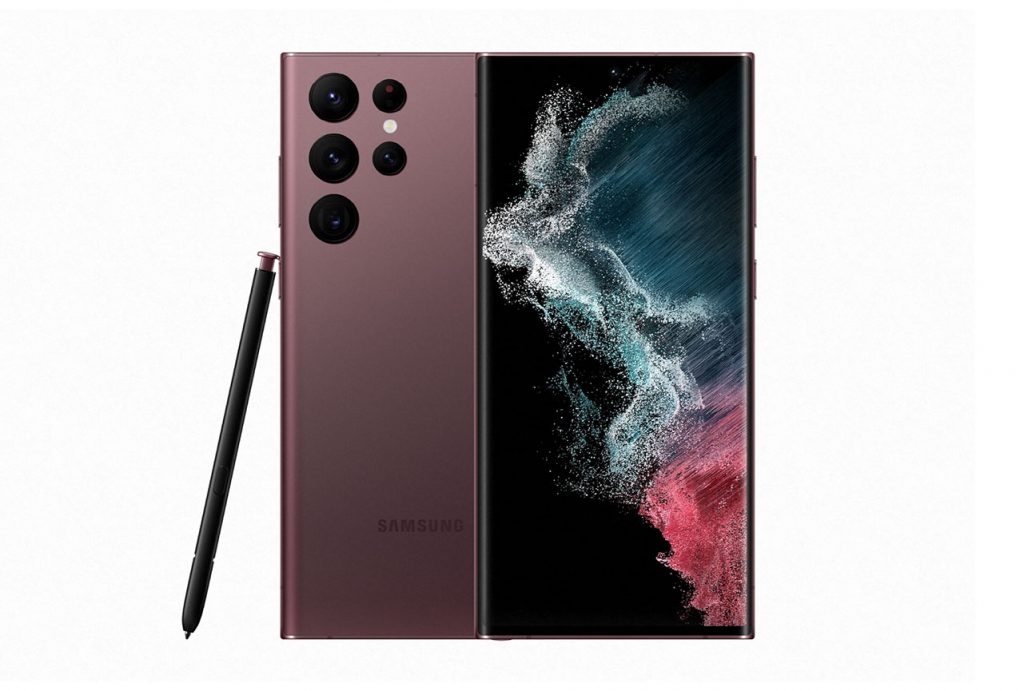


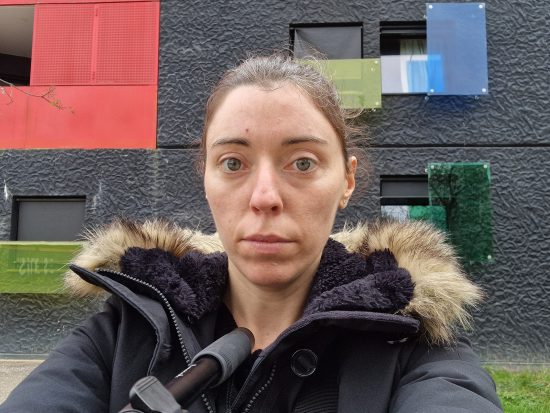
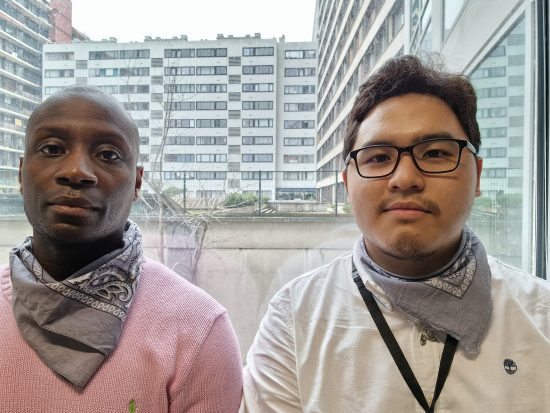
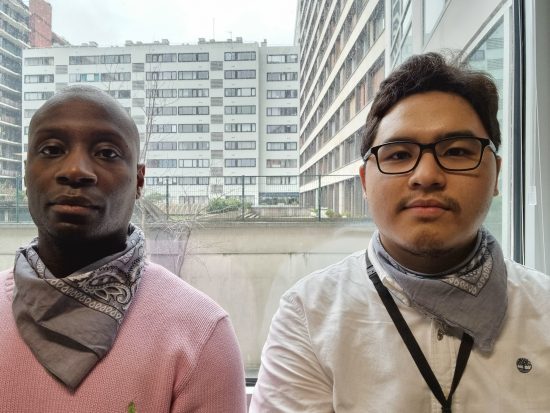
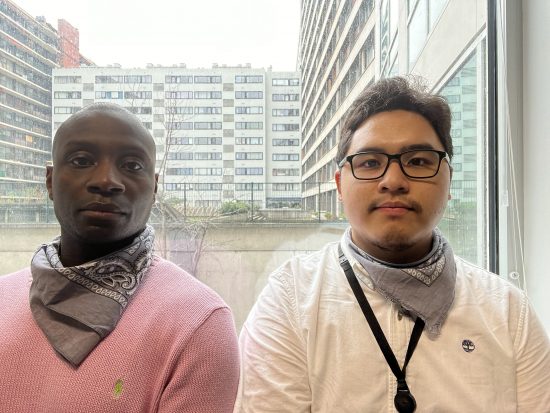
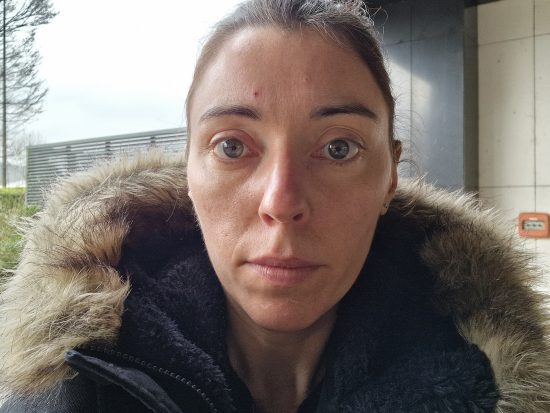
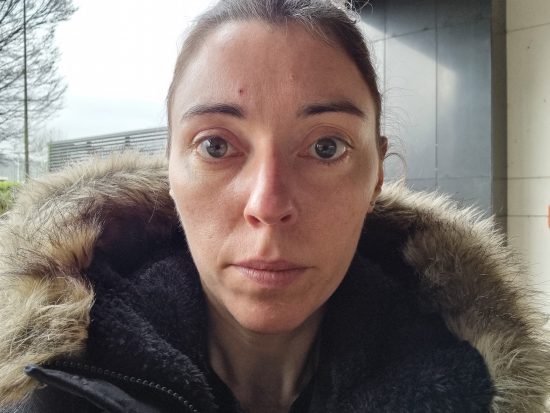
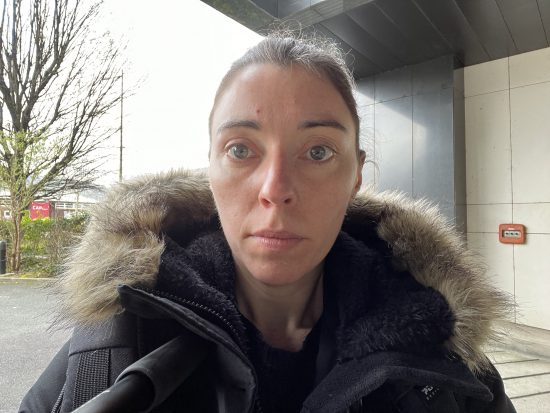
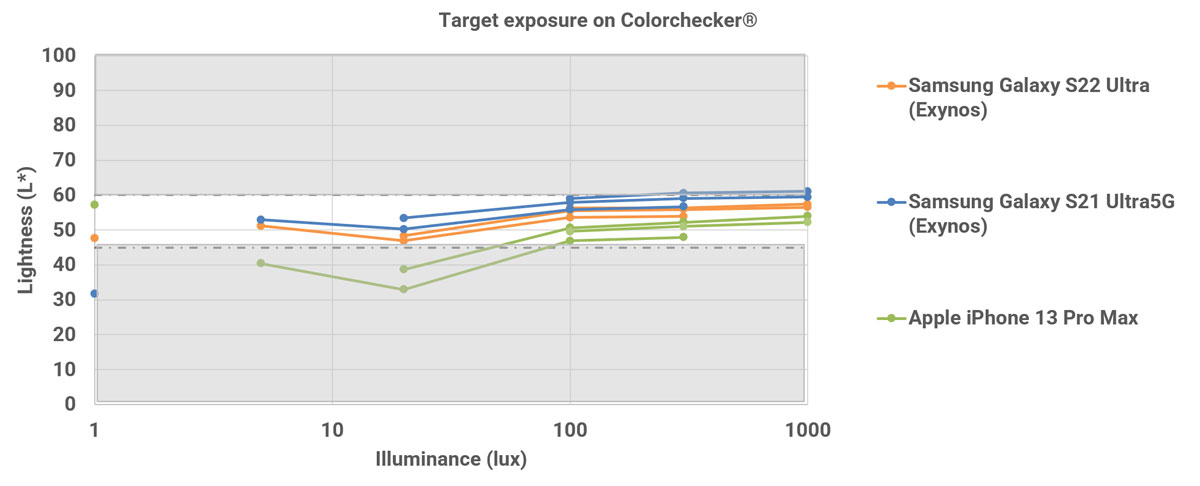
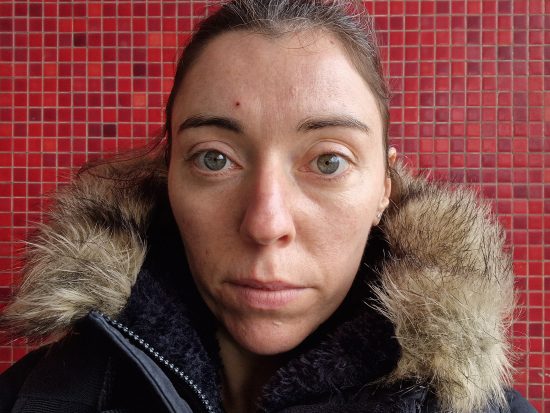
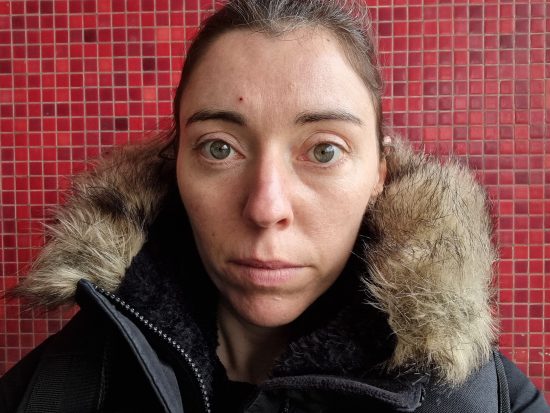
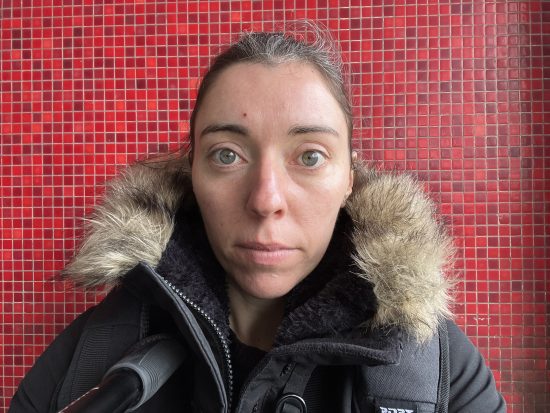
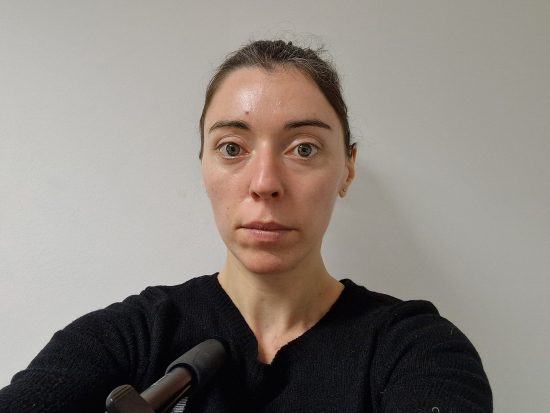
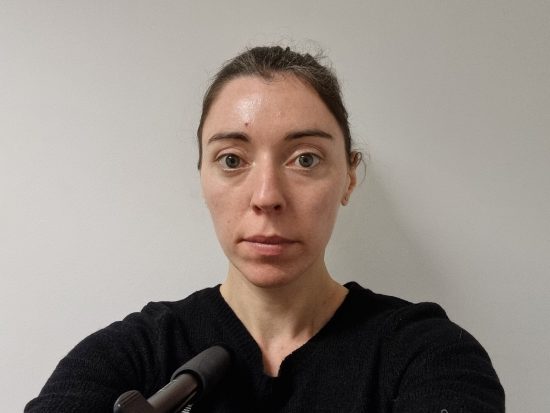
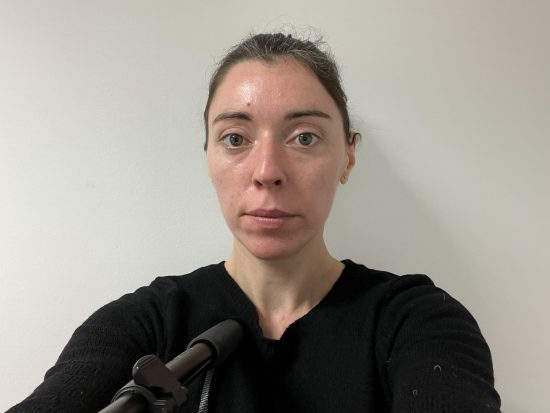
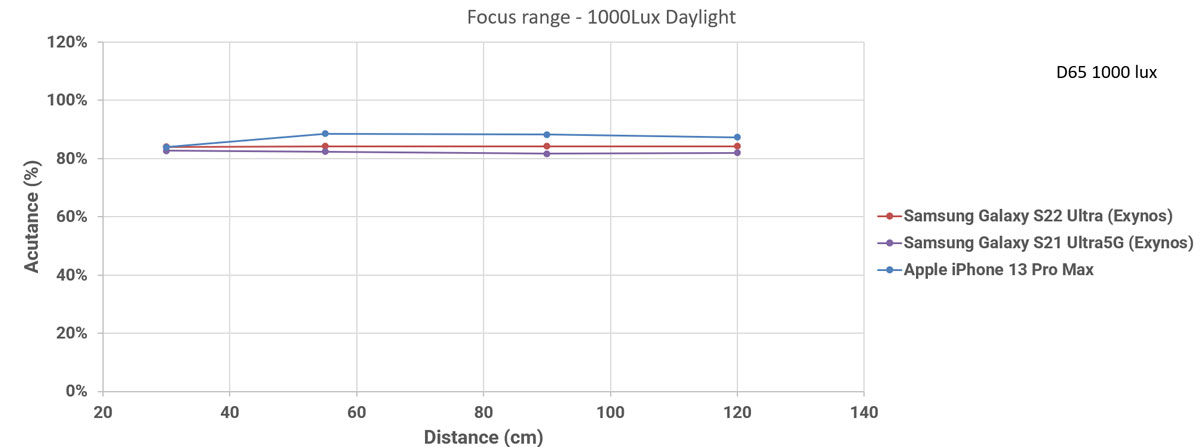
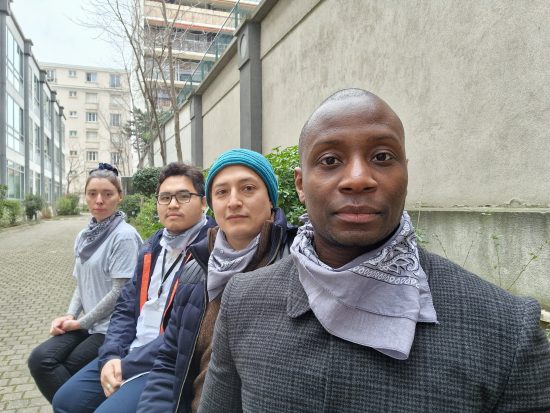
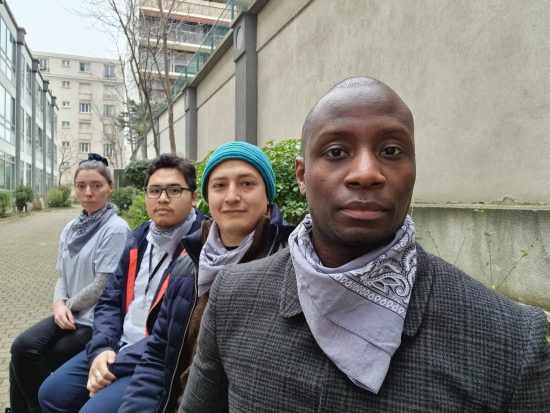
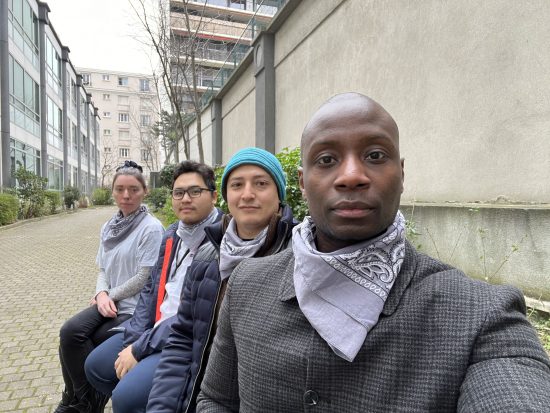
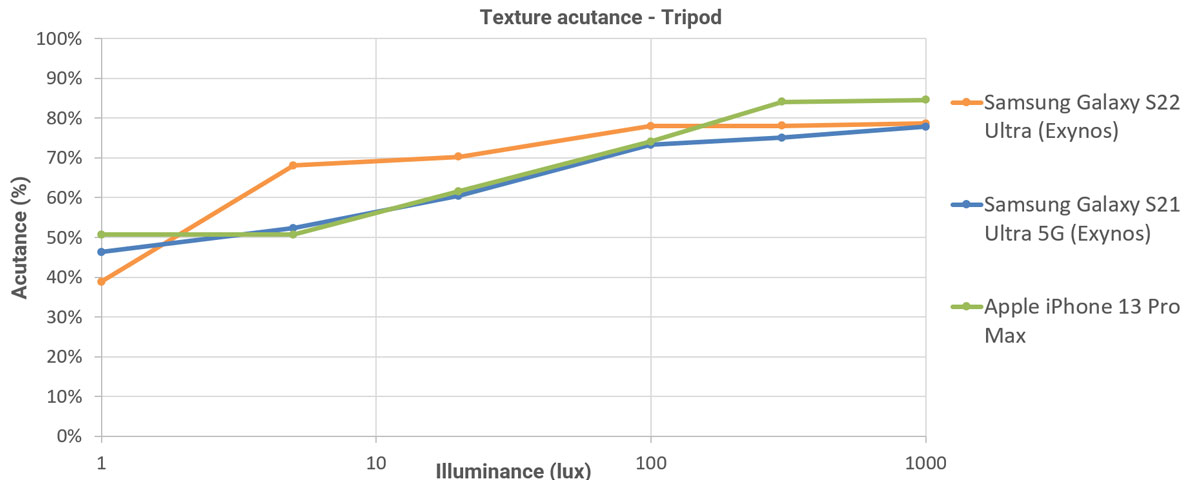
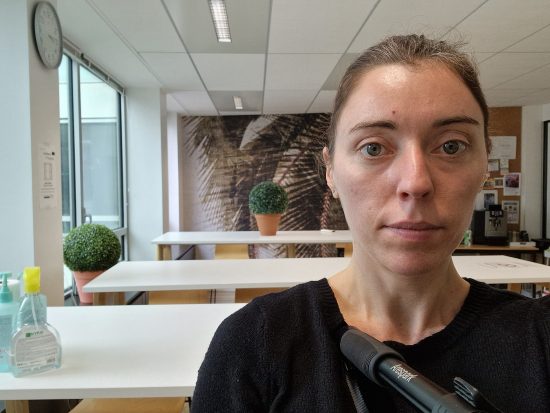
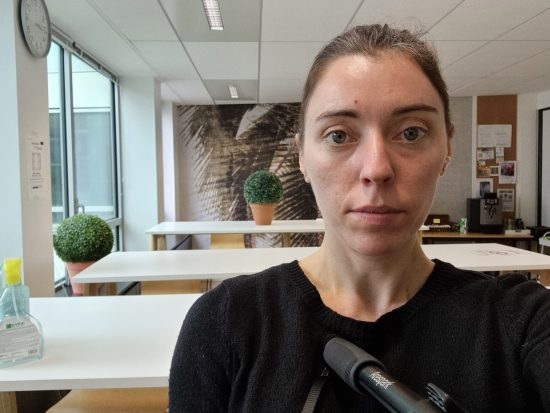
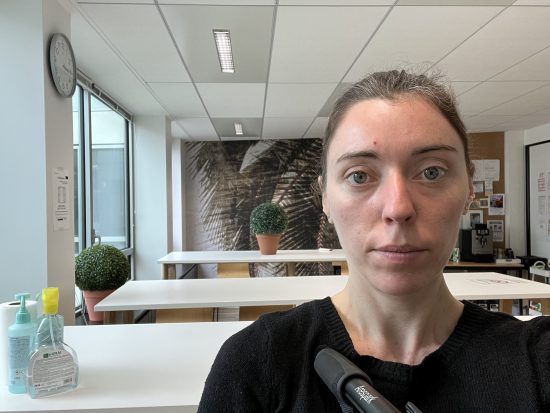



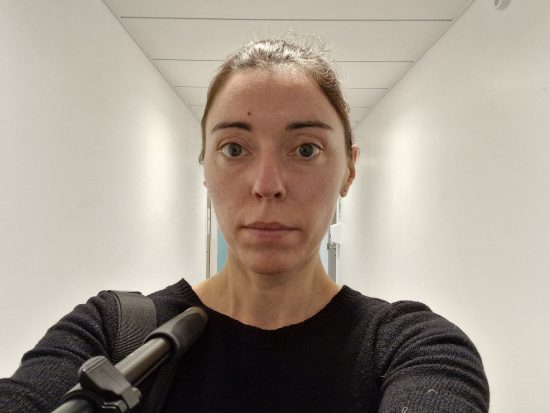
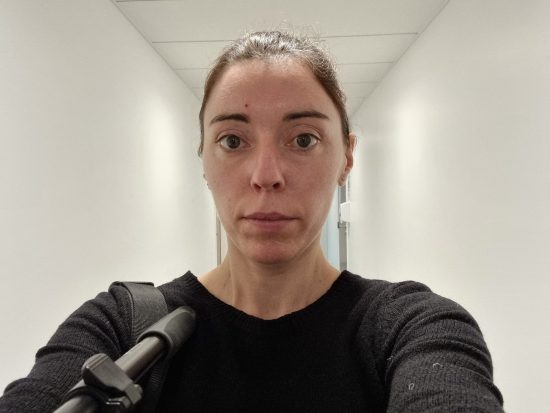
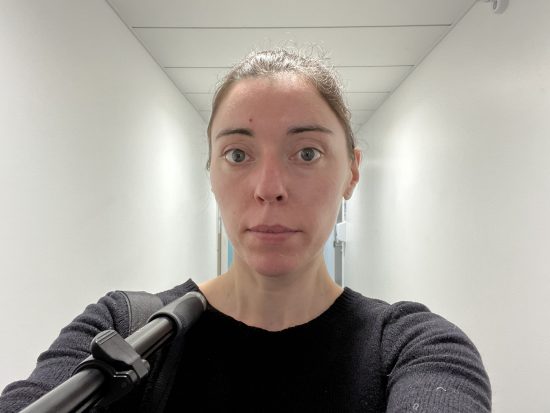

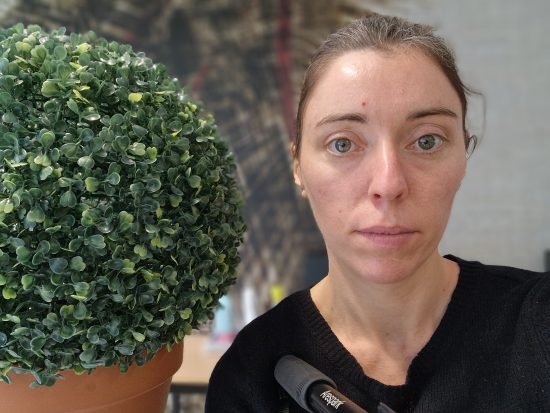
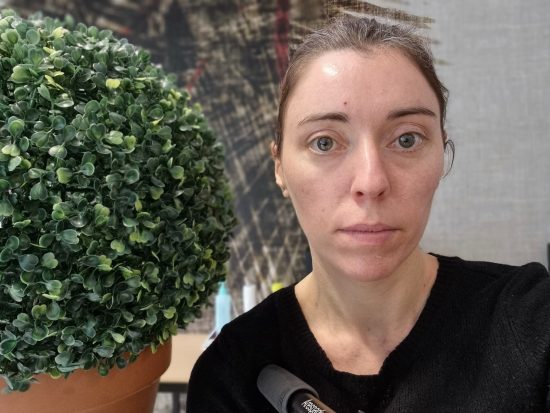
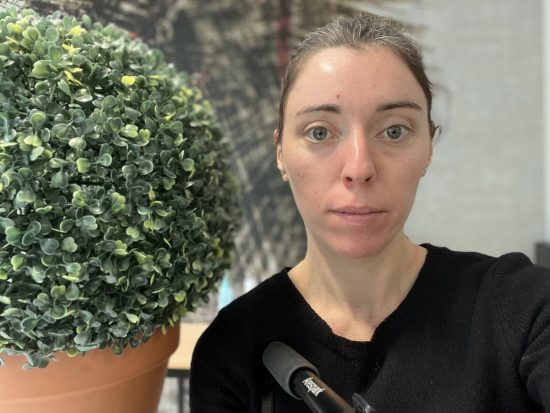
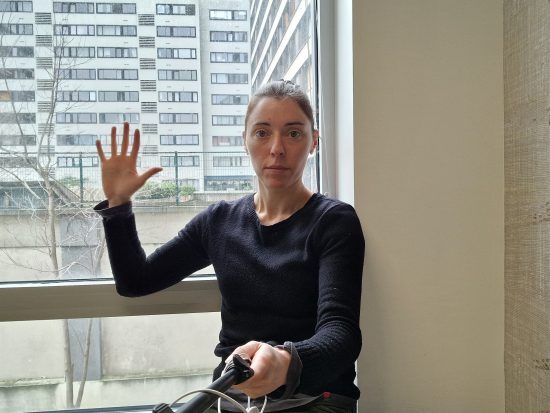
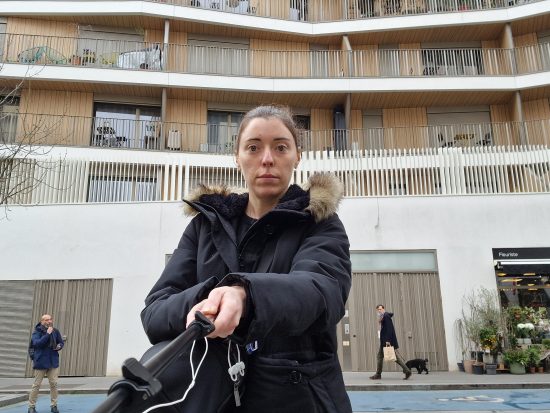
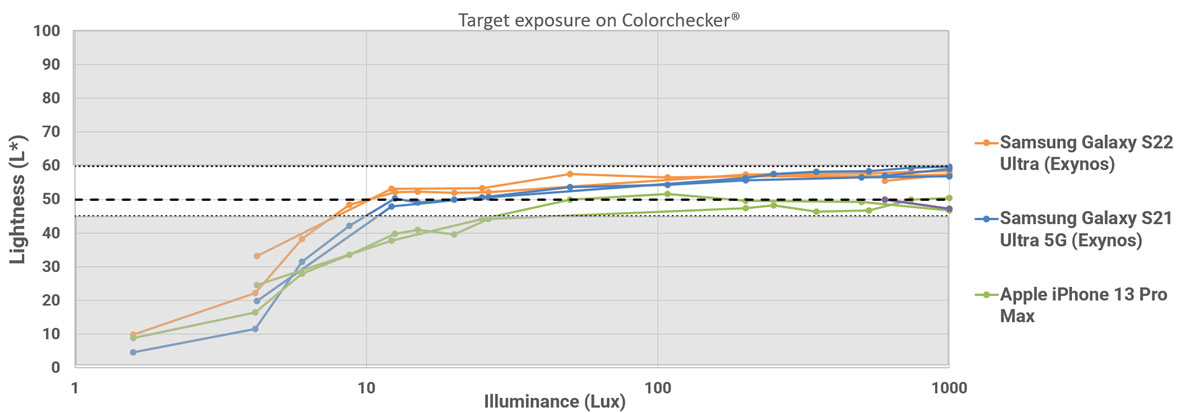
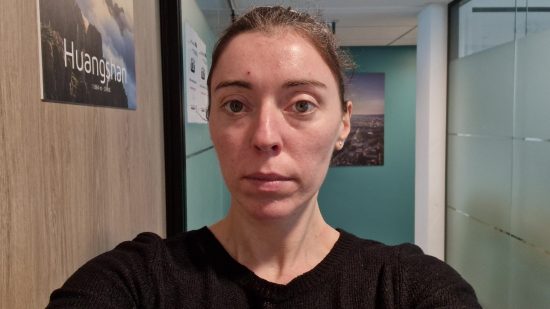
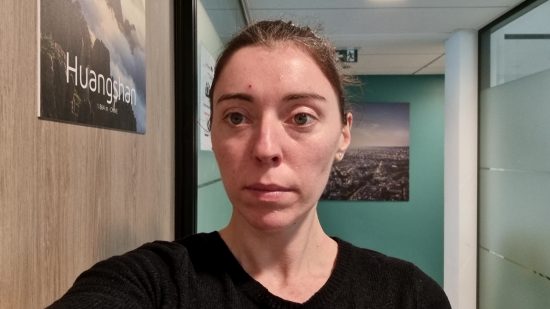
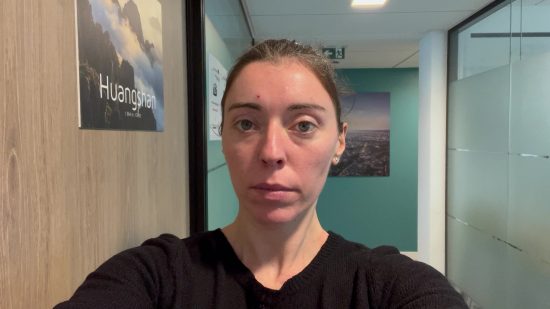
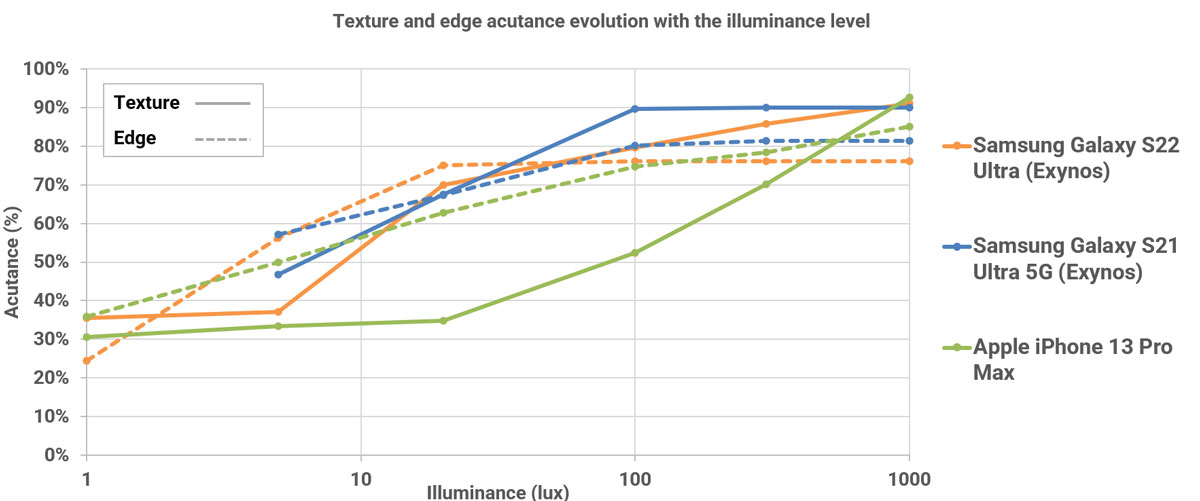
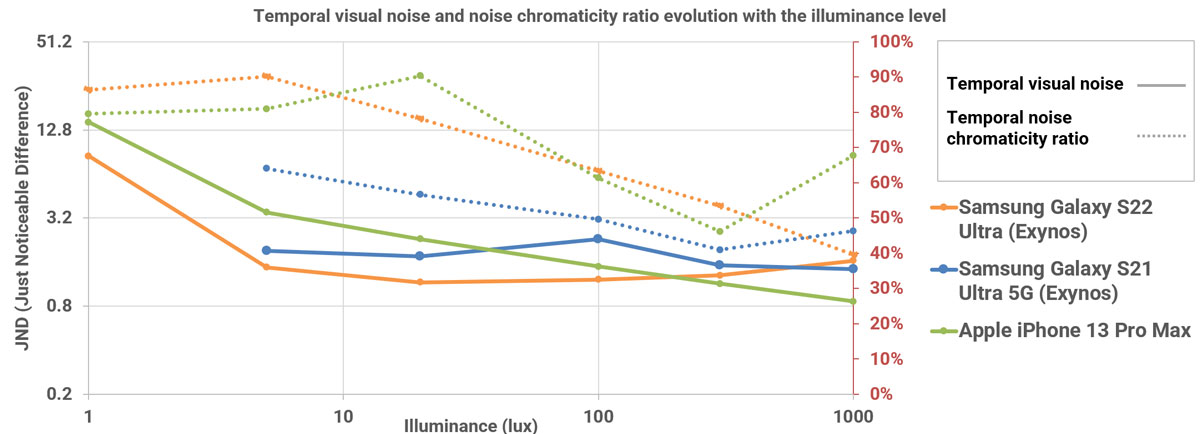
DXOMARK encourages its readers to share comments on the articles. To read or post comments, Disqus cookies are required. Change your Cookies Preferences and read more about our Comment Policy.